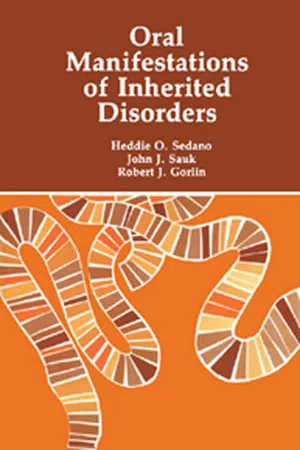1.1 Genetic Counseling
A distinctive pattern of signs and symptoms constitutes a syndrome. Knowledge of the pattern may enable the clinician to make a diagnosis. Changes and variations occur within a single syndrome, but when understood as part of the malformation processes, they actually enhance the clinical description by adding further diagnostic criteria. Labeling a disorder not only satisfies the diagnostician, but diminishes the anxiety of patients and their relatives.
Having an unknown or extremely rare disorder or one “that no one ever heard of” is distressing. Even more dangerous, however, is incorrect diagnosis. For example, we have seen a young teenager with the Melnick-Needles syndrome, an essentially benign disorder, who was told she had osteogenesis imperfecta. Considerable time and psychological support were required to correct this clinical error in judgment.
Counseling patients with inherited disorders is sometimes rewarding, but often the proband will leave the office and forget the possible consequences to which their progeny may be subject. Some forget they ever received counseling, while many others will recall that counseling was given but will not have understood the information. It is imperative, therefore, that the counselor speak at the patients’ level of comprehension. It is advisable that he/she have the counselees repeat in their own words what has been discussed. Counseling can be provided by a geneticist, a physician, or a dentist. The only key requirement is that the counselor be knowledgeable concerning the disorder about which he/she is being consulted and about its inheritance pattern. The counselor should seek advice in all doubtful cases.
It is important not only that the patients and their relatives understand the chances of having similarly affected children but that they comprehend fully the prognosis for the disorder. The counselor must remember that learning that one is the carrier of a heritable disorder often awakens a marked feeling of guilt which eventually may be transferred to and shared by the nearest relatives. It is advisable that the counselor, if possible, be thoroughly familiar with the patient and that he/she fully understand the psychological complications that the diagnosis of a severe inherited condition may produce. At the risk of boring some readers, a brief review of single gene inheritance patterns is undertaken here.
Autosomal Dominant Inheritance.
For an affected parent the risk of having an affected offspring is 50% in each pregnancy. One must remember that this is merely an estimate of probability. In a small family with two children for example, none, one, or both may be affected. Males and females are equally affected. The condition is therefore carried vertically from one generation to the next. Failure of the condition to be expressed at all in an individual inheriting the gene is referred to as lack of penetrance. An isolated example of a condition known to be autosomal dominant may represent a new mutation or a misrepresentation of paternity or, rarely, maternity. Autosomal dominant disorders often vary in severity among the individuals affected (variable expressivity).
Autosomal Recessive Inheritance.
The parents of children with autosomal recessive disorders characteristically are phenotypically normal. They are recognized as carriers of the gene (heterozygotes) after the birth of an affected offspring. For parents who have had one affected offspring, the risk of recurrence is 25% in each pregnancy. If the gene is rare, a history of parental consanguinity is frequently present. Male and female offspring are affected in approximately equal proportion. For known heterozygote parents, the probability of having a homozygote normal offspring is 25%; the risk of having a heterozygote carrier offspring is 50% and, as mentioned above, the risk of having a homozygote affected offspring is 25% in every pregnancy.
X-linked Inheritance.
Females can be either heterozygous or homozygous for a given mutant gene, because they have two X-chromosomes. Therefore, in the female, X-linked conditions can be either recess...
